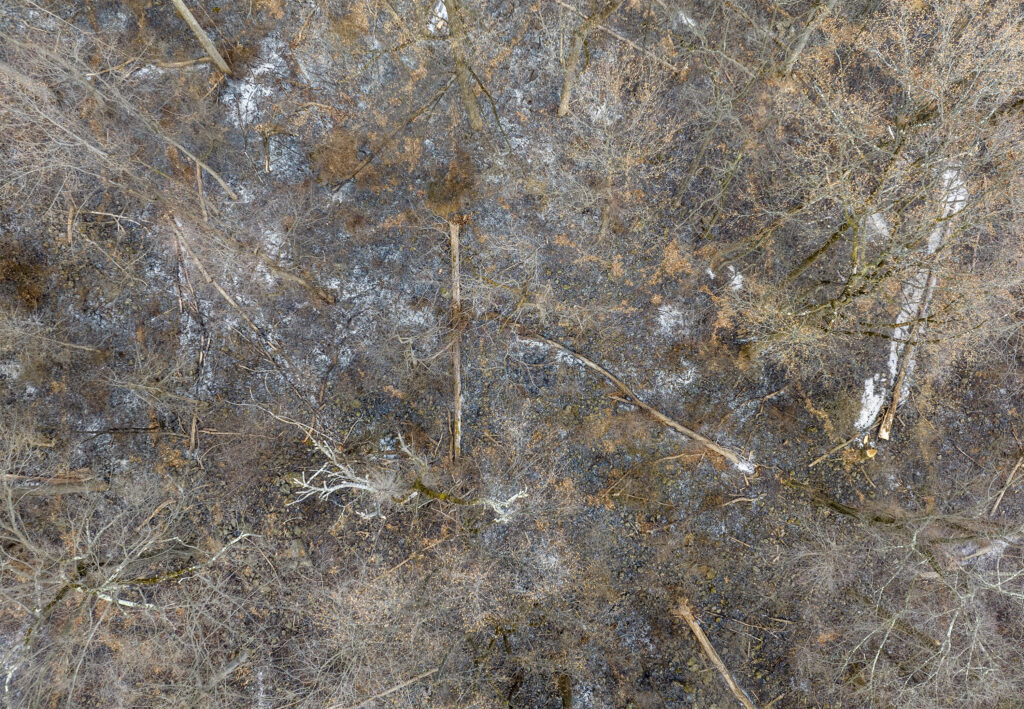A third fire, in less than four months, was confirmed in Hopewell this week.
The potential threat of wildfire was a distant thought to many of us, for plenty of decades. California, Canada, and Myrtle Beach are still hundreds to thousands of miles away. But in 2023 our skies turned orange and for several days our air was not fit to breathe, due to Canadian wildfires. During this past weekend, fire hit home in Hopewell when a tree was blown over, and collided with a powerline. Sustained winds carried and probably intensified the resulting flames, creating threatening conditions to over 30 residences. That number would likely have been much higher, and homes would have burned, if it weren’t for the swift action of our local firefighters and the New Jersey Forest Fire Service.
The scenery along Woosamonsa and Poor Farm roads illustrates some of the actions taken by these professional crews to save homes, livestock and forest as the fire grew to nearly 300 acres. Some roadside fields were deliberately burned to prevent flames from jumping across Woosamonsa Road, preventing the fire from extending further south. Houses set inside the wood line have charred yards; more signs of intentional backfires lit to eliminate any fuel for the wildfire to move close to houses. There are signs of backfires paralleling driveways, and on septic mounds. The effort put forth by our firefighters and Forest Fire Service to protect humans and nature from this incident was monumental.

It is well known now in the conservation community that the lands we live on and around were cared for and managed by Native Americans for millennia. These lands were managed to be ecologically productive, for the benefit of human communities living in balance with nature. Controlled burns were an important tool used by North America’s first people to sculpt and steward the land. Fire was used to grow medicine, food and resources; and to create access for hunting. Thousands of years of intentional fire probably helped to shape some of our dominant woodland types, like Oak-Hickory Forest. We have learned that controlled burning was used to promote the germination of oak trees by Native Americans. These trees, depending on their species, support 400 to over 500 species of native insects and invertebrates – important food sources for so much of our modestly larger wildlife (like songbirds). Most of the woodlands around us, that are part of our community, were accustomed to this care for an incredible amount of time. When the demographics of the United States drastically changed, so did the stewarding practices of the land. Fire became absent, because to Europeans, fire was a danger, not a resource or tool.
Centuries later, we are beginning to feel the impacts of this change in land care. With a lack of controlled burning we, even in central Jersey, as illustrated this week, are “feeling the burn” of wildfire – fire that does threaten both humans and nature. Controlled burns carried out by the NJFFS not only perform important ecological management measures, but also reduce fuel load in woodlands. Reduced fuel loads decrease the impact and threat of wildfire. Local research also suggests that prescribed fire promotes native plant diversity and abundance in grassland habitats. Other research performed in New Jersey suggests that a prescribed fire regime in second-growth (post agricultural) woodlands is beneficial for managing non-native and invasive shrub species. In north Jersey, we’ve seen the re-growth of native forest floor species in woodlands managed with prescribed fire.
Using fire to care for natural lands can be hard to understand; especially since we have only ever been taught to fear it. “Stop, drop, and roll” is all I was taught about fire until I was in my early-30’s. I think it’s vital that we, as a community, choose to open our minds up to what our natural lands are asking for in terms of care, and not limit their health with practices that are only comfortable for us. Millennia of ecological stewardship by indigenous communities created and fortified natural plant and wildlife communities that are well adapted and probably reliant on intentional fire. The forests we see today, even those categorized as old forest (woodlands intact for more than 150-200 years) more than likely have very little resemblance to the forests of the eastern seaboard prior to European colonization. Invasive species aside, the plant communities of our present mature woodlands are quite different; trees such as maple and birch, and in some cases beech, are abundant or dominate upland and drier forest lands that would have had very different structure under the care of indigenous people. This can be experienced locally at Baldpate Mountain and Woosamonsa Ridge Preserve. And, these forest systems have likely lost an abundance of forest herbs, from spring and summer wildflowers to grasses, sedges and ferns. In their place, dense invasive dominated shrub layers or absolutely nothing grows (courtesy of overabundant deer browsing). One can only speculate that this quick and drastic change in plant community also threatens our diversity of insects and songbirds.
If we continue to mis-manage land by making choices that are convenient or familiar, we inadvertently create and foster conditions that have the potential to impact our future generations with environmental concerns that we cannot fathom today.







